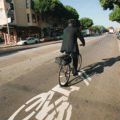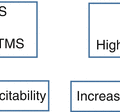© Springer International Publishing AG 2018
Stefano Masiero and Ugo Carraro (eds.)Rehabilitation Medicine for Elderly PatientsPractical Issues in Geriatricshttps://doi.org/10.1007/978-3-319-57406-6_4343. Rehabilitation in Older Patients with Peripheral Arterial Disease
(1)
Angiology Unit, San Giacomo Hospital, Castelfranco Veneto, TV, Italy
(2)
Italian Society for Angiology and Vascular Medicine (SIAPAV), Catanzaro, Italy
(3)
European Society for Vascular Medicine (ESVM), Rome, Italy
43.1 Introduction
Cardiovascular diseases (CVDs) are the leading cause of death and disability in Europe, posing a great social and economic burden. The sedentary lifestyle strongly promotes and accelerates age-related conditions, such as frailty and disability, representing an independent risk factor for cardiovascular disease and all causes related to morbidity and mortality. Moreover, the time devoted to physical activity linearly decreased with age. Peripheral arterial disease (PAD) itself, both asymptomatic and symptomatic, represents an important risk factor for cardiovascular morbidity and mortality. The striking increase in both the incidence and prevalence of PAD with increasing age is apparent from epidemiological data, and it has been estimated that the biennial incidence rate of intermittent claudication (IC) is 26.6 per 1000 men and 13.3 per 1000 women. Physical activity is one of the cornerstones for prevention of cardiovascular disease and for the treatment of PAD. However, most studies demonstrated that the relationship between physical fitness and vascular disease was mainly performed with middle-aged adults, and relatively few studies have been conducted among elderly subjects [1].
43.2 Mechanisms of Rehabilitation
The benefit and possible mechanisms of rehabilitation, also in old patients, include improvements in endothelial function, skeletal muscle metabolism, and blood viscosity. In addition to hemodynamic and metabolic mechanisms, improved biomechanisms of walking also contribute to increase walking ability by decreasing the oxygen requirements to sustain a given level of constant load exercise. Many studies have also documented an improvement of general physical capability with a reduction in heart rate, respiration, and oxygen consumption with the same workload. Patients acquire the capability to walk for longer distance and duration at higher speed [2]. Indeed, PAD patients with IC had improved endothelial-dependent vasodilation measured in the upper extremity after engaging in a treadmill walking rehabilitation program [3].
The beneficial effects of low to moderate aerobic exercise training programs on improving functional capacity in old patients with PAD have been documented. Such patients could improve claudication symptoms after only a couple of months of rehabilitation and are likely to experience continual improvement thereafter. In addition to improving endothelial function and exercise tolerance, 6 months of exercise rehabilitation improves calf blood flow after an ischemic response. The severity of PAD may adversely impact the beneficial effects of an exercise rehabilitation program on flow-mediated endothelial function, and there was a trend for less improvement in patients with the lowest ankle to brachial index. Moreover, patients with the lowest baseline calf blood flow (maximal blood flow and postocclusive hyperemic response) had the smallest improvement in endothelial function. This suggests that in patients with severe PAD, adverse effects of atherosclerosis on endothelial function may be, in part, irreversible, or a different treatment design may be needed to see significant improvements [3].
43.3 Modification of Risk Factors
Cardiovascular risk factor modification is a pivotal element of the treatment of PAD. Although extensive evidence showed that exercise improves hypertension, glucose intolerance, and hyperlipidemia in patients without PAD, it remains unclear whether exercise rehabilitation has an impact on cardiovascular risk factors in patients with PAD. Even if large functional gains occur in patients with IC after exercise rehabilitation, it is possible that the absolute amount of exercise in debilitated population (old age and PAD) is insufficient to induce favorable alterations in cardiovascular risk factors [1]. Anyhow, it has been demonstrated that exercise rehabilitation program, in older patients with PAD, lowers LDL-C levels by 8%, total cholesterol levels by 5%, and systolic BP by 6%. These beneficial changes in the cardiac risk factor profiles may potentially reduce the rate of progression of atherosclerosis, as well as the associated complications. Therefore, exercise rehabilitation should be considered an integral part of the management of older patients with PAD [1]. Physical training should represent the primary therapeutic approach also in the subjects with a cluster of risk factors as metabolic syndrome (MS) [1, 4]. Smoking adversely affects exercise capacity in PAD patients, who are the prime candidates for exercise rehabilitation. Anyhow their relatively low baseline physical function does not impair their ability to regain lost functional independence to levels similar to those of nonsmoking patients with PAD.
Stay updated, free articles. Join our Telegram channel

Full access? Get Clinical Tree





